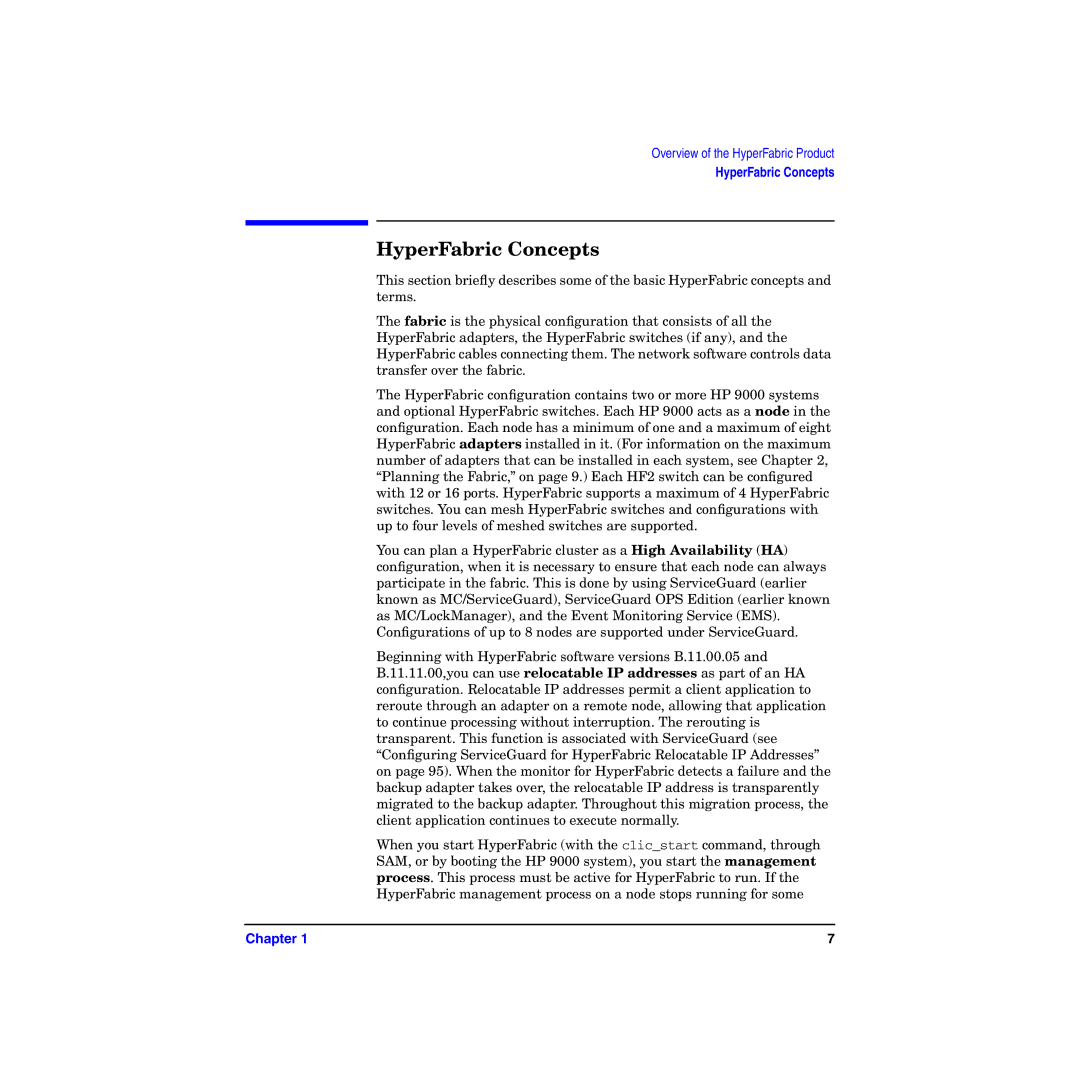
Overview of the HyperFabric Product
HyperFabric Concepts
HyperFabric Concepts
This section briefly describes some of the basic HyperFabric concepts and terms.
The fabric is the physical configuration that consists of all the HyperFabric adapters, the HyperFabric switches (if any), and the HyperFabric cables connecting them. The network software controls data transfer over the fabric.
The HyperFabric configuration contains two or more HP 9000 systems and optional HyperFabric switches. Each HP 9000 acts as a node in the configuration. Each node has a minimum of one and a maximum of eight HyperFabric adapters installed in it. (For information on the maximum number of adapters that can be installed in each system, see Chapter 2, “Planning the Fabric,” on page 9.) Each HF2 switch can be configured with 12 or 16 ports. HyperFabric supports a maximum of 4 HyperFabric switches. You can mesh HyperFabric switches and configurations with up to four levels of meshed switches are supported.
You can plan a HyperFabric cluster as a High Availability (HA) configuration, when it is necessary to ensure that each node can always participate in the fabric. This is done by using ServiceGuard (earlier known as MC/ServiceGuard), ServiceGuard OPS Edition (earlier known as MC/LockManager), and the Event Monitoring Service (EMS). Configurations of up to 8 nodes are supported under ServiceGuard.
Beginning with HyperFabric software versions B.11.00.05 and B.11.11.00,you can use relocatable IP addresses as part of an HA configuration. Relocatable IP addresses permit a client application to reroute through an adapter on a remote node, allowing that application to continue processing without interruption. The rerouting is transparent. This function is associated with ServiceGuard (see “Configuring ServiceGuard for HyperFabric Relocatable IP Addresses” on page 95). When the monitor for HyperFabric detects a failure and the backup adapter takes over, the relocatable IP address is transparently migrated to the backup adapter. Throughout this migration process, the client application continues to execute normally.
When you start HyperFabric (with the clic_start command, through SAM, or by booting the HP 9000 system), you start the management process. This process must be active for HyperFabric to run. If the HyperFabric management process on a node stops running for some
Chapter 1 | 7 |
